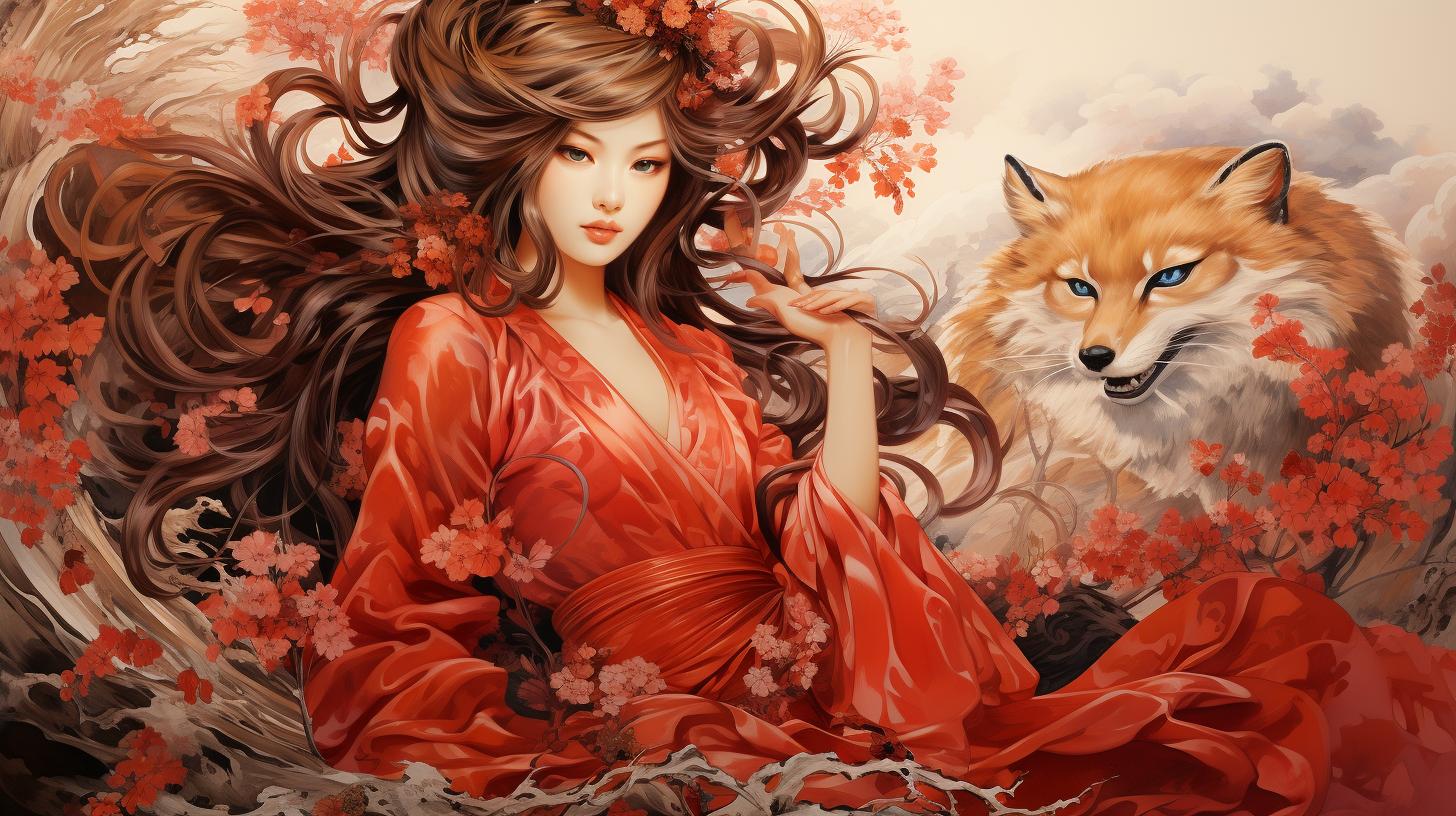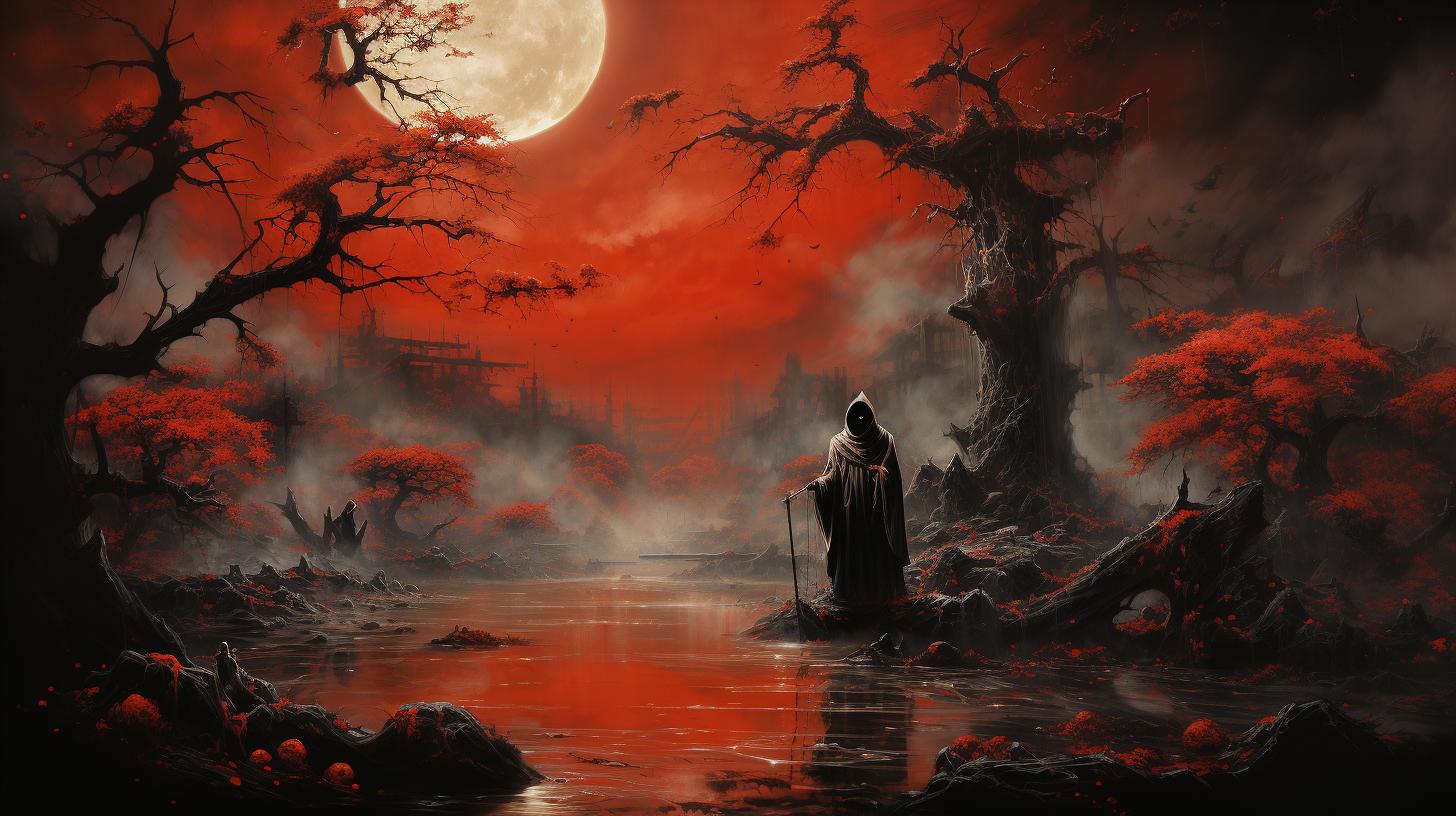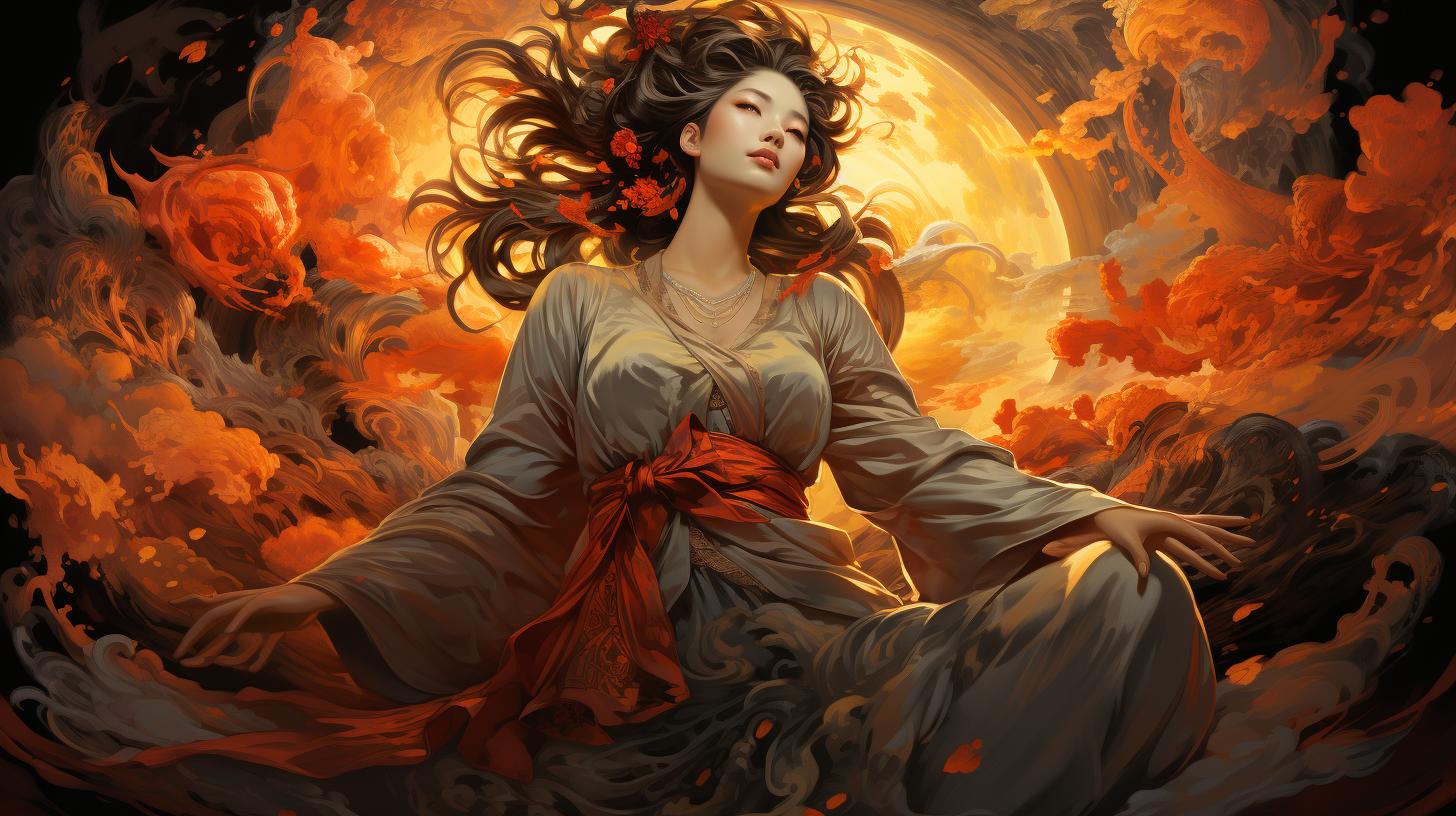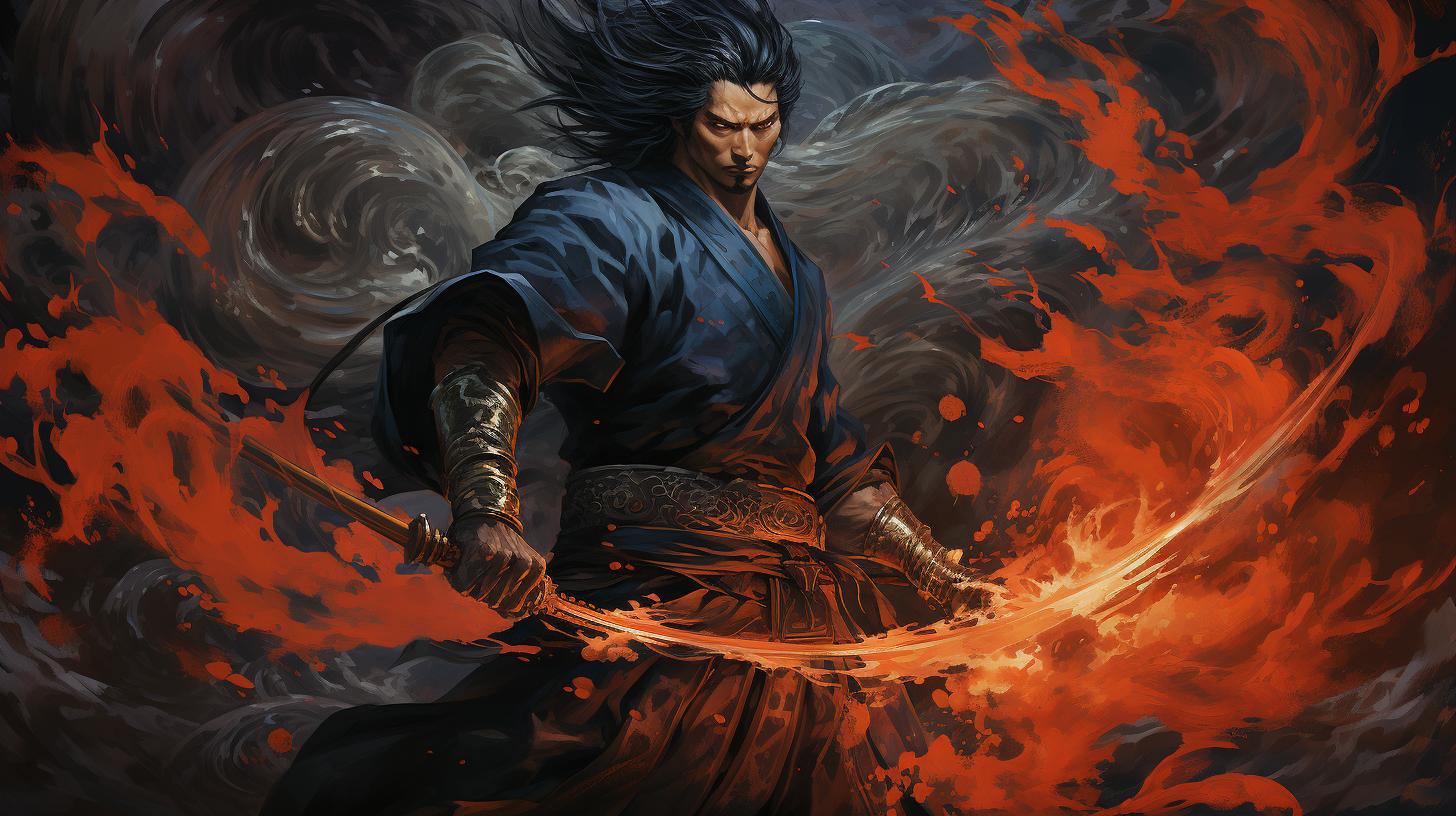Yama no Kami Mountain Spirits Mythology: Exploring Japan’s Sacred Mountain Deities
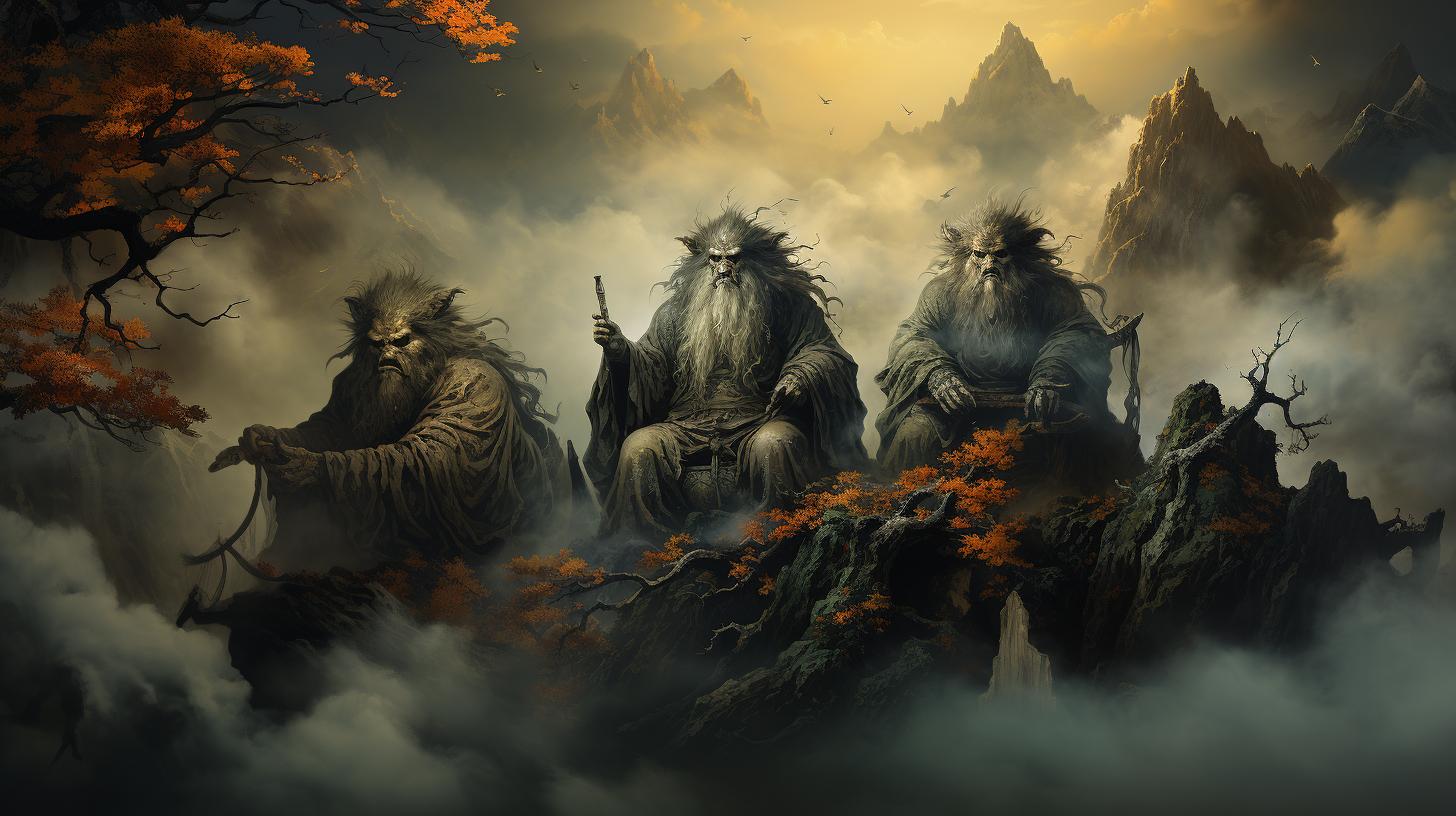
Yama no Kami mountain spirits mythology is a fascinating aspect of Japanese culture and religion. These mountain deities hold significant importance in ancient beliefs and are revered through various ceremonies and rituals.
They are closely associated with the agricultural community and play a role in the farming tradition. Yama no Kami’s divine nature is linked to the sacred mountains and nature itself, influencing art, literature, and even gender roles.
Understanding their mythology sheds light on the rich tapestry of Japanese folklore and their impact on coastal villages and fishing communities.
History and Origins of Yama-no-Kami: Exploring Ancient Beliefs
The history and origins of Yama-no-Kami, the mountain spirits of Japan, trace back to ancient beliefs deeply rooted in Japanese culture. These divine beings have been worshipped and venerated for centuries, playing a vital role in the religious and spiritual traditions of the country.
Their origins can be found in animistic beliefs, where natural elements and phenomena were regarded as possessing divine spirits.
In ancient times, the Japanese people held a deep reverence for the mountains, considering them sacred and powerful.
They believed that the mountains served as the dwelling place for the Yama-no-Kami, who governed over the natural forces and elements of these majestic peaks. The relationship between the Yama-no-Kami and the mountains was seen as inseparable, as the spirits were believed to be the embodiment of the mountains themselves.
These beliefs were particularly significant in the lives of those living in rural and mountainous regions of Japan. The Yama-no-Kami were seen as protectors and providers, bringing blessings to the communities that depended on the mountains for their livelihood.
They were revered for their ability to bring prosperity to the land, ensure bountiful harvests, and grant successful hunts to sustain the people.
Throughout history, the worship of Yama-no-Kami evolved and became intertwined with the development of Shintoism, the indigenous religion of Japan.
Shinto rituals and practices incorporated the veneration of these mountain spirits, attributing divine qualities to them and recognizing their influence in various aspects of life.
Through the lens of Yama-no-Kami mythology, we gain insights into the ancient beliefs and cultural heritage of Japan.
Exploring their history and origins allows us to appreciate the deep spiritual connection between the Japanese people and the mountains that have shaped their way of life for centuries.
The Role of Yama-no-Kami in Japanese Culture and Religion
The Yama-no-Kami hold a significant role in Japanese culture and religion, symbolizing the divine connection between humans and nature.
These mountain deities are revered for their influence on various aspects of life, shaping beliefs and customs throughout generations.
1. Guardians of the Mountains and Forests:
The Yama-no-Kami are seen as guardians of the mountains and forests, embodying the raw power and spiritual essence of these natural landscapes.
They are worshiped for their ability to provide protection and abundance to those who reside within their domains.
2. Intermediaries between Heaven and Earth:
Yama-no-Kami act as intermediaries between the heavens and the earthly realm.
They facilitate communication with the spiritual realm and channel blessings and guidance to the human world. Their presence is believed to ensure harmony between the mortal realm and the divine.
3. Symbols of Power and Resilience:
The Yama-no-Kami represent strength, resilience, and the enduring spirit of nature. They inspire awe and reverence, reminding people of the cyclical nature of life, and the importance of adaptability and perseverance in the face of challenges.
4. Spiritual Guides and Protectors:
These mountain spirits serve as spiritual guides and protectors, offering guidance and blessings to those who seek their aid. They are revered for their wisdom and healing abilities, with devotees seeking their assistance for various aspects of their lives, including health, prosperity, and success.
5. Catalysts for Rituals and Ceremonies:
The Yama-no-Kami play an integral role in Japanese rituals and ceremonies, influencing the cultural fabric of the nation. Their presence is deeply intertwined with agricultural and seasonal festivities, where offerings and prayers are made to ensure bountiful harvests and the well-being of the community.
6. Ambassadors of Tradition and Heritage:
As custodians of tradition and heritage, the Yama-no-Kami ensure the preservation of cultural practices and beliefs. They inspire artisans, poets, and painters, who capture their essence in various forms of artistic expression, contributing to the rich tapestry of Japanese cultural identity.
In conclusion, the Yama-no-Kami hold a profound significance in Japanese culture and religion. They embody the spiritual connection between humans and nature, serving as guides, protectors, and intermediaries between the realms.
Their role extends beyond individual worship, shaping rituals, traditions, and artistic expressions that celebrate the enduring power of these mountain deities.
The Divine Nature of Yama-no-Kami: Understanding their Significance
The Yama-no-Kami, the mountain spirits of Japanese mythology, hold a divine nature that is deeply intertwined with the natural world and the beliefs of the Japanese people. These deities are revered for their association with the sacred mountains and their influence over various aspects of life.
One of the key aspects of understanding the significance of Yama-no-Kami is their role as guardians and protectors of the mountains. They are believed to reside within these majestic peaks, embodying the essence of nature’s power and beauty.
The Japanese people hold great respect for the mountains as sacred spaces, and the Yama-no-Kami act as mediators between humans and the spiritual realm.
These mountain spirits are seen as benevolent beings who bring blessings and fortunes to those who worship and respect them.
Farmers, in particular, rely on the favor of the Yama-no-Kami for bountiful harvests and successful agricultural endeavors. Through rituals and prayers, the farmers seek the guidance and support of these powerful deities in their farming practices.
Moreover, the Yama-no-Kami are not limited to the realm of agriculture alone. They also play a significant role in influencing other aspects of human life. These divine entities are believed to have the ability to bestow protection and ward off evil.

This belief leads to the inclusion of Yama-no-Kami in various spiritual practices and ceremonies, ensuring the well-being and prosperity of individuals and communities.
Additionally, the Yama-no-Kami are closely associated with the concept of balance in nature.
They are believed to maintain the delicate equilibrium between humans and the natural world. Through their divine presence, they encourage people to live in harmony with the environment and respect the interconnectedness of all living beings.
In summary, the Yama-no-Kami possess a divine nature that encompasses their role as guardians of the mountains, bringers of blessings and protection, and maintainers of harmony in the natural world.
Understanding their significance reveals the profound impact of these mountain spirits on Japanese culture, spirituality, and the lives of the people who revere them.
Yama-no-Kami in Shintoism: Linking the Sacred Mountains and Deities
In the realm of Shintoism, Yama-no-Kami holds a crucial position, acting as a bridge between the sacred mountains and the mystical world of deities.
Shinto, the indigenous religion of Japan, revolves around the belief in the divine spirits inhabiting various elements in nature, and Yama-no-Kami embodies this divine connection to the mountains.
Shintoism views mountains as sacred entities, serving as the dwelling place for these revered deities.
Yama-no-Kami is deeply intertwined with the natural landscapes of Japan, symbolizing the awe-inspiring power and spiritual essence that emanates from the mountains. It is believed that these deities safeguard the mountains, ensuring their preservation and bestowing blessings upon those who seek their favor.
The worship of Yama-no-Kami in Shintoism involves various rituals and ceremonies that pay homage to the sanctity of the mountains. These practices aim to establish a connection with the divine forces and express gratitude for the abundant resources that flow from the mountains to sustain life.
- Shinboku-sai: An annual ritual held in mountainous regions to purify and honor the sacred trees that are considered manifestations of Yama-no-Kami.
- Sumiyoshi-sai: A ceremony conducted in spring, seeking the protection and bountiful harvests by offering prayers and gratitude to Yama-no-Kami.
- Harai-sai: A purification ritual performed before ascending a mountain or entering a sacred space, to cleanse oneself spiritually and show respect to Yama-no-Kami.
Through these rituals, Shinto followers seek harmony with nature and strive to maintain a balance between human existence and the divine presence manifesting in the sacred mountains.
Shinto teachings emphasize the interconnectedness of all beings and the necessity to live in harmony with the natural world. Yama-no-Kami acts as a guardian and guide, encouraging people to respect and coexist with the mountains, fostering a deep appreciation for the awe-inspiring beauty and spiritual significance they hold.
Yama-no-Kami’s role in Shintoism extends beyond the physical realm of the mountains. The deities are regarded as protectors of communities, offering blessings for prosperous harvests, fishing expeditions, and overall well-being.
The spiritual connection with Yama-no-Kami strengthens the bond between the people and the sacred mountains, providing a sense of unity and cultural identity.
As Shintoism continues to thrive in modern Japanese society, the reverence for Yama-no-Kami and their link to the sacred mountains remains deeply rooted.
The preservation of the environment and the sustainable use of resources are integral to this belief system, emphasizing the importance of respecting and nurturing the natural world, guided by the wisdom and guidance of Yama-no-Kami.
Veneration and Worship of Yama-no-Kami: Ceremonies and Rituals of Devotion
In Japanese culture, the veneration and worship of Yama-no-Kami, the mountain spirits, holds a significant place.
Their presence is manifested through various ceremonies and rituals, deeply rooted in ancient traditions and beliefs. These practices serve as a way to express devotion and seek blessings from these revered deities.
1. Wakagi Mukae Ceremony: Among the rituals dedicated to the Yama-no-Kami, the Wakagi Mukae Ceremony stands out. This ceremony is held in early spring, as an act of gratitude and asking for a good harvest.
People gather at shrines or sacred mountains, bringing offerings of rice, fruits, and sake. The rituals involve purification rites, prayers, and the presentation of offerings to the deities.
2. Yamanokami Mairi: Another prominent ceremony is the Yamanokami Mairi, which takes place during the summer months.
This ritual involves visiting a mountain shrine to honor the Yama-no-Kami and seek protection and guidance. Participants climb the mountain accompanied by priests or spiritual leaders, offering prayers and making offerings at the shrine.
The connection between nature, spirituality, and the divine is strengthened through these acts of worship.
3. Festivals and Celebrations: Various festivals throughout the year are dedicated to the Yama-no-Kami, celebrating their divine presence and influence on the community.
These festivals often involve vibrant processions, music, dances, and theatrical performances. One such festival is the Yamabiraki, the opening of mountain trails after the winter season. This event marks the beginning of a new harvest cycle and serves as an occasion to express gratitude and seek blessings from the mountain spirits.
4. Ritual Offerings: In addition to specific ceremonies, regular offerings are made to the Yama-no-Kami as a sign of reverence. These offerings can include food, sake, flowers, or even handmade items.
They are presented at shrines, sacred trees, or natural formations believed to house the spirits. The act of offering symbolizes a symbolic exchange between humans and the divine.
Veneration and worship of the Yama-no-Kami play a crucial role in connecting the community with nature, acknowledging the interconnectedness of humans and the spiritual realm.
These ceremonies and rituals foster a sense of gratitude, harmony, and respect for the natural environment, further strengthening the bond between people and the sacred mountain spirits.
Yama-no-Kami and the Agricultural Community: Importance in Farming Tradition
The Yama-no-Kami deity holds a special place in the hearts of the agricultural community in Japan, playing a crucial role in farming traditions and practices.
Their significance is deeply intertwined with the cultivation of crops, the changing seasons, and the prosperity of the land.
For generations, farmers have revered the Yama-no-Kami as guardians of the fields, seeing them as benevolent entities that bring fertility and abundance to their crops.
The deity is believed to bless the soil, ensuring a bountiful harvest and protecting the farmers from natural calamities.
Ceremonies and rituals centered around the Yama-no-Kami take place throughout the farming cycle, marking important milestones such as the sowing of seeds, the growth of plants, and the harvesting of crops.
These rituals serve as expressions of gratitude and seek blessings for a successful and prosperous farming season.
- During the sowing of seeds, farmers gather to perform a ritual called “Yama-no-Kami no tane-maki.”
They offer prayers and scatter seeds while invoking the blessings of the deity for healthy and abundant crops.
- As the plants grow, another ceremony known as “Yama-no-Kami no nori-mai” is performed.
Farmers dance and offer thanks to the deity, expressing gratitude for the growth of their crops and seeking continued blessings.
- The harvest season is marked by the “Yama-no-Kami no kari-matsuri” or the harvest festival.
Farmers come together to celebrate the successful harvest and express their gratitude to the Yama-no-Kami for the fruits of their labor.
The Yama-no-Kami’s connection to the agricultural community goes beyond ceremonies and rituals.
They serve as a source of inspiration and guidance for farmers, fostering a deep respect for nature and the cycles of life. The deity’s teachings emphasize the importance of sustainable farming practices, harmonious coexistence with the environment, and the preservation of traditional agricultural knowledge.
Today, the influence of Yama-no-Kami on the agricultural community remains strong, reminding farmers of their ancestral roots and the integral role they play in ensuring food security and the well-being of communities.
The traditions and beliefs associated with the Yama-no-Kami continue to shape the agricultural landscape of Japan, keeping alive a deep connection to the land and its spiritual guardians.
Yama-no-Kami and their Relation to Mountains and Nature
The Yama-no-Kami, the revered deities of the mountains in Japanese mythology, have a strong connection to the natural world, particularly to mountains and forests.
They are believed to embody the essence of these sacred landscapes, wielding great power over the natural elements and embodying the spirits that reside within them.
As the guardians and protectors of the mountains, the Yama-no-Kami are seen as the divine force behind the awe-inspiring beauty and tranquility found in these majestic peaks.
They are believed to shape the land, rivers, and flora that exist in these mountainous regions, influencing the delicate balance of nature.
These mountain spirits are revered for their role in maintaining the harmony between humans and the natural environment.
They are regarded as the intermediaries between humans and the divine, bridging the gap between the mortal realm and the spiritual realm that resides within the mountains.
The Yama-no-Kami are often associated with specific mountains, with each deity being the guardian and protector of their respective peak.
These sacred mountains hold immense significance in Japanese culture and are often places of pilgrimage and spiritual retreat. People visit these mountains to seek the blessings of the Yama-no-Kami, offering prayers and paying homage to these divine beings.
- Mount Fuji: Revered as one of the most iconic and sacred mountains in Japan, Mount Fuji is closely associated with the Yama-no-Kami. It is believed that the deity residing in Mount Fuji oversees the balance and vitality of the entire country.
- Mount Hiei: Located near Kyoto, Mount Hiei is revered as a sacred mountain housing numerous Buddhist temples and monasteries.
It is believed that the Yama-no-Kami residing in Mount Hiei provides spiritual guidance and protection to those who seek solace in its presence.
- Mount Tateyama: Situated in the Northern Alps of Japan, Mount Tateyama is renowned for its stunning natural beauty and its role as the abode of a powerful Yama-no-Kami. It is a place of pilgrimage for many, who believe that traversing its sacred trails brings spiritual enlightenment.
Throughout history, the Yama-no-Kami have been deeply ingrained in Japanese folklore and mythology, with stories and legends passed down through generations.
These tales often depict the deities’ interactions with humans and their impact on the natural world, emphasizing the respect and reverence that should be shown towards these divine beings.
Overall, the Yama-no-Kami’s relation to mountains and nature in Japanese mythology highlights the profound connection between humans and the natural world.
The deities’ presence in these majestic landscapes serves as a reminder of the delicate balance of the environment and the importance of preserving and respecting the sanctity of nature.
Mythological Tales and Legends: Stories of Yama-no-Kami in Japanese Folklore
Within the rich tapestry of Japanese folklore, the Yama-no-Kami mountain spirits have inspired countless captivating tales and legends.
These mythical stories highlight the connection between the divine entities and the natural world, providing deeper insights into their significance within Japanese culture.
One such legendary tale revolves around the powerful Yama-no-Kami, known as Oyamatsumi, the deity presiding over the mountains.
According to the ancient myths, Oyamatsumi descended from the heavens to teach the early inhabitants of Japan the art of farming and agriculture. This benevolent deity shared his wisdom on cultivating the land, ensuring bountiful harvests and prosperity.
Another fascinating legend portrays Yama-no-Kami as Izanami, a divine presence associated with creation and fertility. In this myth, Izanami, along with her partner Izanagi, gave birth to the islands of Japan and the diverse beings inhabiting them.
It is believed that Izanami’s essence resides within the mountains, blessing the land and fostering abundance.
The story of Yama-no-Kami also delves into the realm of romance and tragic encounters.
A popular tale tells of the deity’s love affair with a mortal woman, resulting in a forbidden union. Their love was a testament to the power of passion, but it eventually led to divine consequences.
In a fit of jealousy, Yama-no-Kami unleashed her wrath upon the mortal woman, transforming her into a mountain. This legend is often used as a cautionary tale, reminding humans of the deities’ sometimes unpredictable and tempestuous nature.
A captivating narrative recounts the adventures of a young warrior who sought the assistance of Yama-no-Kami in his quest for bravery and strength. The deity tested the warrior’s courage through trials and tribulations, ultimately granting him the desired attributes.
This tale showcases the Yama-no-Kami’s role as a mentor and guide, shaping the destinies of those who seek their favor.
These mythological tales and legends surrounding the Yama-no-Kami mountain spirits offer a glimpse into the realm of the supernatural and the intricate relationship between humans and deities.
Through these stories, the spiritual significance of these divine entities becomes apparent, intertwining with Japanese traditions, values, and beliefs.
Impact of Yama-no-Kami on Art and Literature: Depictions in Woodcuts and Poetry
The influence of Yama-no-Kami on art and literature in Japan has been profound, with their presence often depicted in woodcuts and celebrated through poetry.
These artistic expressions provide a visual and poetic representation of the spiritual significance associated with these mountain deities. Let’s explore how Yama-no-Kami have inspired and influenced the creative endeavors of Japanese artists and poets.
Woodcuts
Woodcuts, or ukiyo-e, have long been a popular medium for artistic expression in Japan. These intricate pieces of art involve carving the image onto a wooden block, applying ink, and transferring it onto paper.
Yama-no-Kami frequently appear in woodcut prints, often depicted as majestic and divine beings adorned with symbols of their mountain domain.
- The use of vibrant colors and bold lines in woodcuts captures the awe-inspiring nature of Yama-no-Kami, emphasizing their significance in Japanese culture.
- These woodcuts not only depict the deities themselves but also showcase their interactions with humans and the natural world, portraying the harmony between the spiritual and physical realms.
- Woodcuts also serve as a means to educate and disseminate knowledge about Yama-no-Kami, providing glimpses into their mythology and the stories associated with them.
Poetry
Japanese poetry, particularly haiku and tanka, has often been inspired by the beauty and mystique of nature, including the presence of Yama-no-Kami. These short yet poignant verses offer insights into the spiritual connection between humans and the mountain deities, as well as their profound influence on the natural world.
- Poets often use vivid imagery to describe the mountains and the presence of Yama-no-Kami, evoking a sense of reverence and wonder.
- Through poetry, the essence of these deities is captured, with their power and influence infused into the lines and the emotions they evoke.
- Some poems explore the ephemeral nature of life and the transient beauty found in the mountains, drawing parallels between the passing seasons and the cyclical nature of existence.
By combining visual art and poetic expressions, Yama-no-Kami’s impact on art and literature becomes evident.
These artistic interpretations not only serve as a form of worship but also as a means of preserving the folklore and cultural heritage associated with these revered mountain spirits. Through woodcuts and poetry, the significance of Yama-no-Kami is immortalized, inviting people to delve deeper into their mythology and appreciate the profound artistic legacy they have inspired.
Influence of Yama-no-Kami on Coastal Villages and Fishing Communities
The Yama-no-Kami mountain spirits mythology has had a profound impact on the coastal villages and fishing communities of Japan. These sacred deities, deeply rooted in the religious beliefs of the Japanese people, have influenced various aspects of daily life and cultural practices in these communities.
1. Preservation of Tradition: The presence of Yama-no-Kami has played a crucial role in preserving traditional fishing practices and techniques. Fishermen and women often seek the blessings and protection of these mountain spirits, believing that it ensures a bountiful catch and safe voyages at sea.
2. Ceremonial Practices: Coastal villages and fishing communities hold elaborate ceremonies and rituals dedicated to the Yama-no-Kami. These rituals involve offerings and prayers to appease the deities, seeking their favor and protection.
This spiritual connection has helped foster a sense of unity and tradition among the fishing communities.
- Ritual of First Catch: One notable ceremony is the ritual of the first catch, where fishermen offer a portion of their initial catch to the Yama-no-Kami as a sign of gratitude.
This act symbolizes the fishermen’s respect for nature and acknowledgement of the importance of sustainable fishing practices.
- Blessings for Safe Voyages: Before embarking on fishing expeditions, fishermen often visit local shrines dedicated to the Yama-no-Kami to seek blessings and protection for their journeys.
They pray for calm seas, fruitful fishing trips, and safe returns.
3. Sense of Community: The worship of Yama-no-Kami has also fostered a strong sense of community among coastal villagers and fishermen.
These shared beliefs and rituals create a bond among the community members, promoting cooperation and mutual support in their fishing endeavors.
4. Sustainable Fishing Practices: The influence of Yama-no-Kami extends to the promotion of sustainable fishing practices.
The deities are believed to govern the oceans, and fishermen hold deep respect for the natural resources entrusted to them. This reverence ensures a harmonious balance between human needs and ecological preservation.
5. Cultural Depictions: The mountain spirits’ influence can be seen in the artistic expressions of coastal villages. Traditional folk songs and dances often incorporate references to the Yama-no-Kami, celebrating their role in the local culture and identity.
Overall, the Yama-no-Kami mountain spirits mythology has become an integral part of the coastal villages and fishing communities in Japan. It has shaped their cultural practices, fostered a sense of unity, and promoted sustainable fishing practices.
The connection between these communities and the Yama-no-Kami continues to thrive, ensuring the preservation of ancient traditions and a harmonious relationship with nature.
Yama-no-Kami and Gender Roles: Exploring the Deity’s Attitude towards Women
The role of women in the worship and relationship with Yama-no-Kami is a significant aspect of Japanese mythology.
Throughout history, these mountain spirits have displayed a complex and sometimes contradictory attitude towards women. Let’s explore how gender roles intertwine with the reverence of Yama-no-Kami.
The ancient beliefs surrounding Yama-no-Kami portray them as a deity deeply connected to the female reproductive process.
It is said that these powerful spirits facilitate childbirth and bring blessings to women in their childbearing years. However, this divine femininity comes with a contrasting aspect, as Yama-no-Kami is also known to be a jealous deity who displays territorial tendencies.
Yama-no-Kami’s territorial nature manifests in their intolerance towards the presence of women from rival villages or those who don’t belong to the immediate community. It’s believed that crossing into their sacred territory may invite misfortune or even infertility.
As a result, women from different regions steer clear of these areas or seek guidance and protection from their own local deities.
Furthermore, the relationship between Yama-no-Kami and women is deeply intertwined with cultural practices and customs.
In coastal fishing communities, women often have specific roles and responsibilities connected to the deity’s worship. They play essential roles during ceremonies and rituals, offering prayers and making offerings to invoke the blessings of Yama-no-Kami.
These gender-specific duties are guided by the belief that women possess a unique spiritual connection with the Yama-no-Kami. Their involvement in these rituals strengthens their bond with the deity and ensures the prosperity and well-being of the community as a whole.
It’s important to note that while Yama-no-Kami may exhibit a protective and territorial attitude towards women, their role in Japanese society extends beyond this aspect. Women in Japanese folklore are often represented as powerful figures, capable of influencing the natural world and commanding respect.
- Women’s involvement in Yama-no-Kami rituals and ceremonies demonstrates their integral role in upholding traditional customs.
- They serve as cultural guardians, preserving the traditions and passing down the knowledge associated with the worship of Yama-no-Kami.
- Their participation highlights the significance of women in shaping and preserving the spiritual and cultural fabric of their communities.
Overall, the exploration of Yama-no-Kami and gender roles reveals a complex interplay between the divine, cultural traditions, and the societal position of women.
It showcases the multifaceted nature of belief systems and how they shape and are shaped by the communities that uphold them.
Similarities and Differences: Yama-no-Kami across Different Regions of Japan
Yama-no-Kami, the mountain spirits, exhibit fascinating similarities and differences as we explore various regions of Japan.
While their core essence remains consistent, unique regional characteristics have shaped their manifestation and worship practices. Let’s delve into the intriguing diversity of Yama-no-Kami across different parts of Japan:
- Kanto Region: In the Kanto region, Yama-no-Kami often take the form of powerful deities associated with majestic peaks and volcanic mountains.
They are revered for their protective nature and are believed to keep calamities at bay. Festivals like the Fuji Matsuri celebrate these deities, attracting thousands of worshippers.
- Kansai Region: In the Kansai region, Yama-no-Kami are often associated with lush green mountains and are deeply intertwined with agricultural traditions.
They are revered as bringers of abundant harvests and are honored in vibrant ceremonies and rituals, such as the Yama-no-Kami Matsuri.
- Tohoku Region: In the Tohoku region, Yama-no-Kami are closely linked to the region’s rugged landscapes and harsh winters.
They are worshipped as guardians of nature and are invoked for protection against natural disasters. The Hanamaki Yama-no-Kami Festival celebrates these deities with spectacular processions and theatrical performances.
- Kyushu Region: In the Kyushu region, Yama-no-Kami are often associated with hot springs and volcanic activity.
They are worshipped as healing deities, and their shrines are places of rejuvenation and spiritual solace. The Beppu Yama-no-Kami Festival attracts pilgrims seeking the blessings of these divine mountain spirits.
- Hokkaido Region: In the Hokkaido region, Yama-no-Kami embody the wild and untamed nature of the northern landscapes.
They are revered as symbols of resilience and adaptability, reflecting the spirit of the local indigenous Ainu people. Ceremonies like the Sapporo Yama-no-Kami Festival honor these deities amidst the beauty of Hokkaido’s snow-covered mountains.
This brief glimpse into the similarities and differences of Yama-no-Kami across different regions of Japan reflects the rich tapestry of Japanese culture and traditions.
These regional variations highlight how Yama-no-Kami have shaped themselves according to the unique geographical features, climate, and spiritual beliefs of each area, creating a diverse and captivating mythology.
Contemporary Relevance: Yama-no-Kami in Modern Japanese Society
The influence of Yama-no-Kami continues to resonate in modern Japanese society, shaping various aspects of cultural and religious practices.
These mountain spirits mythology are not only revered for their historical significance but also for their enduring impact on the lives of the Japanese people.
Here are some ways in which Yama-no-Kami maintains its contemporary relevance:
- Festivals and Celebrations: In many regions of Japan, annual festivals dedicated to Yama-no-Kami are organized, bringing communities together to celebrate and honor these revered deities.
These festive events showcase traditional dances, music, and rituals, providing a glimpse into the deep-rooted cultural heritage.
- Environmental Conservation: The reverence for Yama-no-Kami extends to the protection and preservation of natural resources.
Their association with mountains and nature inspires environmental awareness and efforts to safeguard Japan’s scenic landscapes and biodiversity. Many conservation initiatives and organizations draw inspiration from the spiritual connection between Yama-no-Kami and the environment.
- Inspirations in Art and Entertainment: Yama-no-Kami characters and stories continue to inspire artists, writers, and filmmakers in contemporary Japan.
From traditional woodblock prints to modern manga and anime adaptations, these mythical beings have left an indelible mark on the artistic landscape of the country, captivating audiences with their timeless allure.
- Exploration of Gender Roles: Yama-no-Kami’s influence on gender roles continues to spark discussions and reflections on societal norms.
While traditionally associated with gender-specific roles, these deities and their stories now offer a platform for reevaluating and challenging gender stereotypes in modern Japan.
- Promotion of Cultural Tourism: The rich mythology and cultural significance surrounding Yama-no-Kami attract tourists both domestically and internationally.
Visitors eager to immerse themselves in Japanese traditions and explore the spiritual heritage of the country often include pilgrimage routes and sacred sites associated with these mountain spirits in their itineraries.
Through these and many other expressions of contemporary relevance, Yama-no-Kami persists as a vital part of Japanese society, bridging the gap between ancient traditions and the ever-evolving modern world.
.











